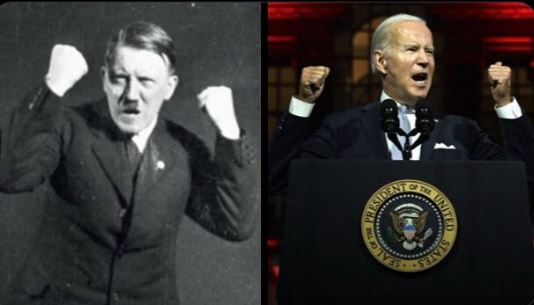Posts Tagged → 1970s
Don’t trust anyone under thirty
A few weeks before I was born, a leftist activist in Berkeley, California, said “Don’t trust anyone over thirty” in a newspaper interview, and a star was born.
What young Jack Weinberg was saying in that late 1964 interview was that a generation gap had developed between America’s youth and our elders at the time. In 1964, the young people were using language and ideas that their elders could not understand, and did not approve of when they did understand them. Weinberg’s point then was that people over thirty years old could not be trusted, because they could not understand or relate to the young people and held onto old fashioned ideas. There was a sense among young people that they were leading a movement for positive change that would make America even better.
While those young people were wrong about an awful lot, like most everything they promoted, they were right about the Vietnam War. And it was the daily images from that bloody, sad war that energized Jack Weinberg and his fellow activists most, and enabled them to implement a whole bunch of real crap that has still damaged America to this very moment.
Fast forward a couple decades, when I was in graduate school down south back in the late 1980s, and my former hippie dad sent me a funny post card with a cartoon of an aging hippie saying the “Don’t trust anyone over thirty” line, which was crossed out. And then there were subsequent lines, each one crossed out: “Don’t trust anyone over forty, Don’t trust anyone over fifty.” The implication being that the once-young hippies had grown up and themselves become the conservative elders they once rejected, and if Jack Weinberg’s truism was going to still hold true for them all those decades later, it was going to have to keep up with the march of time, age, grey hair, and robust bank accounts and retirement plans. My dad was poking fun at himself, and admitting that he had become that which he once rejected.
And what eventually happened to Jack Weinberg, Abbie Hoffman, Jerry Rubin, and the other 1960s radical leftist Jews and their Christian colleagues? They eventually almost all grew up, bought nice clothes, got married, bought a home, got jobs selling stocks, in law, and accounting. All their silly radical generation gap nonsense was discarded. Many of them found God, and became the hard working middle income earners their parents had aspired to be.
Now let’s fast forward another couple decades and I am talking to a class of college students in central Pennsylvania. Invited by professor Andrea, I mostly answer questions about my perspective on “climate change”, environmental protection, the role and purpose of government, marriage, gardening, owning guns, and work life. Afterwards, Andrea confided to me that her own students accuse her of being a conservative because she is married to a man, with whom she has two kids, a home, a car, a dog, and a mortgage.
“Josh, never in a million years did I think that by being a traditional liberal would I be accused of being a right wing reactionary,” she told me, with her eyes bugging out in surprise.
And this is why we can no longer trust anyone under thirty years of age. These young, untested, pampered, entitled, spoiled goofs clogging up our colleges and street protests and Tik Tok video feeds are not only politically radicalized, they are incapable of growing out of it. These are not the happy hippies of the 1960s, rather, these are monsters.
Their overweening parents have protected them from reality all their lives, allowed them to become culturally indoctrinated in government schools resulting in no actual skills like knowledge of math and science, but great skills in yelling at people they don’t know while crying about boo-boo words. Unlike yesteryear’s working class hippies they want to emulate, today’s kids don’t know anything and cannot do anything, so much so that they are at risk of never growing up and never being able to grow up.
This is where today’s young people diverge from the Jack Weinbergs, Abbie Hoffmans, and Jerry Rubins of the 1960s and 1970s. Young people in the 1960s still had an American work ethic and knew basic right from wrong. They thirsted for knowledge and trusted science. Today’s kids mostly have zero work ethic, know zero actual facts, have no useable skills, can’t tell a man from a woman, and have no moral compass. And they are not interested in anything that gets in the way of their five dollar latte.
Today’s young people have become not an agent for change, but for destruction. We can’t understand them because they don’t understand themselves and probably can’t ever. Today’s young people are a dire threat to themselves and to the rest of us who rely on the rule of law and the application of modern science in our daily lives. Their nonsensical ideas about hiring scientists and engineers based on skin color and allegiance to Marxist principles instead of merit and skill is why Boeing planes are suddenly disintegrating and nearly hitting each other in the air, and why schools everywhere at all levels have openly given up on teaching math and science in lieu of teaching racism against white people, enforcing silly pronouns rules, and subjectively respecting “feelings” above all or “I will throw a crying tantrum while simultaneously beating the snot out of the offender.”
Today’s under-thirty man-child crowd is soon going to be at the controls of America, and it won’t be a sustainable situation. We don’t trust these people for good reason, and unlike the young people of the 1960s who eventually grew up and contributed to America, there is nothing funny or cute about this situation.
Today’s young people aspire to be permanent wards of the state, while their elders work to support them, and also bow and scrape and constantly apologize for whatever imaginary hurt the woman-child has just experienced.
America is in a world of trouble.

America’s young have this fantasy that they can simply force everyone to adopt whatever crazy ideas they have, no matter how destructive

Biden DOJ is suing Texas and others because Biden DOJ does not want federal immigration law enforced. Think about this crazy treason

I am not making this stuff up, just using their own images and their own words (arch demon Adolf Hitler on left)
Turkeys and the critters who eat them
Wild turkeys are one of Pennsylvania’s great conservation success stories. When I was a kid, wild turkeys were like a fable, a mythical animal inhabiting far distant wild lands, that could be seen and maybe heard if you were one of the lucky few. They had been decimated by market hunting in the 1800s and early 1900s. When I took my hunter safety education course at the age of ten at the old Army Reserve building out in the farmland on the east side of State College, the Pennsylvania Game Commission staff proudly showed us films of their successful trap-and-transfer program, where wild turkeys were lured with bait into the range of nets, caught, and then driven to the far reaches of Pennsylvania’s rural areas. Usually State Game Lands with fields.
From the 1970s until the early 2000s, Pennsylvania’s wild turkey population grew and grew, until they seemed to be everywhere, including well south of I-81, the old imaginary dividing line between concrete civilization and wild man country. Apparently turkeys are adaptable to concrete wilderness, because they took up urban residence all over the east coast. Not content with being colorful freeloaders along with the ubiquitous and nasty pigeons and rats in these urban areas from Massachusetts to New Jersey, wild turkeys also provide much hilarity as they attack everything that moves in a display of misguided dominance, including mailmen, soccer moms and their kids, and dogs being walked. Look up the “incident reports” of wild turkey muggings of disbelieving urbanites; lots of funny videos to go along with them, too.
So when turkey populations began to decline in Pennsylvania and parts of New York starting ten years ago, people knew it was not due to the birds’ lack of tenacity. Something new and powerful in the old bird + habitat equation was having an effect.
And in fact in many places here in PA, formerly huge turkey populations are now really low or non-existent. I myself used to look out my windows and watch three separate flocks cycle through our clover-planted yards. When I hunted spring turkeys there (northcentral PA), I would start the day surrounded by gobbling toms, and usually had a couple different opportunities to harvest one within the first few days of the hunting season. It was exciting and fun and a great way to begin the work day, although I will say that by the end of May, I was a hollow shell of a human, having run myself ragged either chasing toms myself, or calling for friends who had not yet filled a tag.
Bottom line is, those old flocks of twenty to thirty birds no longer exist. We are fortunate to see one or two wild turkeys at all on our place. And we have excellent habitat with grouse.
What caused the loss of wild turkeys in PA has generated a discussion similar to the one surrounding the demise of the once amazing world famous smallmouth bass fishery in the lower Susquehanna River. It seems that almost everyone involved has a reasonable opinion about it, and the official experts are being second-guessed by people who have witnessed circumstances different than those described by said experts. The ubiquitous use of trail cameras since 2000 has accompanied this growth in sportsman observational opinion, and very often individual hunters will use their cameras’ footage to make very compelling arguments that contradict official wildlife managers’ narratives.
Something similar happens in the aquatic environment, when thousands of fishermen experience and see something different than what they are being told through official government channels.
So now PGC is toying with the idea of releasing martens into the wilds of Pennsylvania. Similar to the fisher that was released back in the 1990s, martens are a furry little weasel-type animal that, like all weasel type animals everywhere, has an insatiable appetite for everything they can catch and kill. Not necessarily kill and eat. All members of the weasel family (wolverines, fishers, martens, mink, otters, weasels) have periods where they become “surplus killers.” That is, they will kill many more animals than they can eat, just because they seem to enjoy the hunt and the kill. Question being now, What will the new marten do to our turkeys?
Will martens do more of what fishers have so clearly done to PA turkey populations, which is to climb up into trees and eat them while they are roosted and asleep? Will martens only eat turkey eggs? Who knows? And so it follows, why release martens into our forests and farms if we don’t know what impacts they will have?
The question I have, and which I know so many other sportsmen have, is: What kind of studies have been done to date that provide confidence that reintroducing marten will have a net-benefit result, and not a net-negative/cost result?
Most of us agree with government biologists that biodiversity in general is important, and we agree that increasing biodiversity is a worthy goal. But, what are the costs and benefits of doing so? What costs and benefits do marten bring to our forests? I can imagine quite a few costs, mostly impacts on ground nesting birds (like wild turkeys, grouse, pheasant, woodcock, and a zillion species of cute little migratory dickie birds) that are already under tremendous pressure from overpopulating (thanks to urban sprawl) raccoons, skunks, possums, feral cats etc., and I wonder if the benefit of a few hundred citizens annually catching a view of one of these cute and elusive furry weasel-like animals is worth the inevitable costs.
One of the things we must struggle with today is that, as much as we would like to return to the pristine conditions of three hundred or four hundred years ago, where humans had a measurable but relatively minor impact on the environment, the reality on the ground today is totally different. The social carrying capacity among different human groups is one consideration. The carrying capacity of other wildlife is another consideration. I imagine that before people go petitioning or pushing to have these newest predators released back into our forests, we should know what their likely impacts are going to be first. I am willing to sign a petition to have PGC thoroughly study this subject, but I would feel irresponsible to ask the agency to jump before knowing what lies ahead and below.
I will say that I like knowing fishers are in our forests, but I do not like the tremendous impacts they have had on squirrels, rabbits, and turkeys. Everywhere a fisher takes up residence, the small game and turkey populations drop dramatically. Personally, I would prefer to know that there were a few hundred fishers living across Pennsylvania, instead of the thousands we now have that are over-impacting a lot of other equally valuable wildlife (and I enjoy recreationally trapping for fisher every year).
I am not saying that adding martens to Pennsylvania will necessarily be pouring fuel on the fire burning up wild turkey populations, but we really should know. That is the responsible thing to do.
Are Liberals the new conservatives?
After years of disproven Liberal theories and beliefs about specific policies (the effectiveness of gun control) and assumptions (all wars are bad wars), I was wondering if Liberals showed any sign of change. Talking with Liberal friends, debating politics on FaceBook, the conclusion is that Liberals are the new conservatives, in the sense that conservatives were asserted to be unwilling to change, or accept necessary change, back in the 1970s. Conventional wisdom was that conservatives were stodgy, stuck in their ways. But measured by that yard stick, it’s Liberals today who are unwilling to accept that their ideas are disproven and that change is good. Stay tuned for more on this subject.
Josh
